Nedenfor finder du en oversigt over de mest almindelige skadedyr, som du finder i Danmark. Vores mange års erfaring med bekæmpelse af skadedyr gør os til eksperter på området, og derfor har vi også lavet en skadedyrsguide, som du frit kan benytte som opslagsværk. I guiden finder du alle de vigtigste informationer om de mest almindelige skadedyr i Danmark.
Herunder ser du en oversigt over de mest almindelige skadedyr i Danmark. Hos Absolut Skadedyrsservice har vi mange års erfaring med skadedyrsbekæmpelse, og denne erfaring gør, at vi har derfor udarbejdet vores egen skadedyrsguide, som du er velkommen til at bruge som opslagsværk. Den indeholder de vigtigste informationer om de hyppigst forekommende insekter og pattedyr i Danmark. Hver beskrivelse indeholder link til kildemateriale.
Hjem » Skadedyr
Skadedyr er den samlede betegnelse for dyr og insekter, der forvolder plage i hjemmet eller uden for hjemmet. Der kan også være tale om spredning af sygdomme. Man bør altid tage situationen alvorligt, såfremt man finder skadedyr på adressen – det er en pest, der hurtigt kan sprede sig og det bør holdes nede. Effektiv skadedyrsbekæmpelse er en absolut nødvendighed.
Det kan være svært at slippe af med skadedyr, hvis de først er kommet og du bør derfor hurtigst muligt søge professionel hjælp. Den svære bekæmpelse skyldes bl.a. nogle af de svært tilgængelige steder, hvor skadedyrene holder til. Dette kan eksempelvis være imellem og under gulvbrædder, bag fodpaneler, i vægge og lignende. Der kan naturligvis også være tale om skadedyr i haven og andre udendørs områder.
Der er mange årsager til at skadedyr er en plage i hjemmet, i haven eller andre steder. Dette afhænger af selve skadedyret. Nogle mindre insekter kan eksempelvis leve af uld, papir mm., mens andre skadedyr, som fx rotter og mus kan gnave i elektriske installationer og sprede sygdomme. Der kan også være tale om muldvarpe, der ødelægger haven eller større pattedyr som rådyr, der spiser havens blomster og planter.
Det er desværre ikke helt let at undgå skadedyr og det kræver kontinuerlig overvågning samt forebyggelse. Har skadedyrene allerede fundet frem er det vigtigt, at du reagerer hurtigt og kontakter Absolut Skadedyrsservice, så du kan få effektiv og professionel bekæmpelse.
Du kan forebygge mod skadedyr ved at undgå at etablere steder, hvor de trives. Dette kan være noget så simpelt som effektiv rengøring af et kaninbur, så skadedyr ikke kan få lov til at leve mellem sprækker og lignende. Bure til kæledyr er et rent slaraffenland for skadedyr, da insekter og biller tiltrækkes af indholdet. Når disse dør, tiltrækkes endnu flere skadedyr.
Derfor er det vigtigt, at du tænker dig grundigt om inden du køber kæledyr. Er du allerede plaget af skadedyr, vil dette sandsynligvis forstærkes.
Du kan også forebygge ved at undgå at lade madrester være tilgængelige – både indendørs og udendørs. Dette betyder også fodring af fugle tæt på huset, da dette kan tiltrække bl.a. mus og rotter.
Du kan læse mere om de enkelte skadedyr og forebyggelse heraf på deres respektive sider.
Når skadedyrene begynder at mærke sommervarmen i jorden, så øjner de nye muligheder. Ikke fordi varmen giver skadedyr ekstra blod på tanden. Nej, nærmere fordi vi i højere grad har tilbøjelighed til at have døre og vinduer åbne. For skadedyrene betyder det, at der nu er let mulighed for at komme op på loftet eller ind i hulmuren, hvis en dør står åben til et bryggers eller i køkkenet.
Et andet eksempel er, at føringen af elinstallationer i et hus ender ude i teknikrummet. Mange skadedyr kan relativt nemt komme ind i hulmuren, hvis der blot er en lille revne i murværket omkring tavle og ledningskanalerne.
Vi ser hyppigt, at sommerhalvåret byder på flere ubudne gæster, der kommer ind i huse, lejligheder, kældre og i tagrum via åbentstående vinduer og døre, da skadedyrene finder disse smutveje. Ikke fordi de er kloge, men fordi der simpelthen er så mange. Alene deres antal gør, at der med stor sandsynlighed, kommer et skadedyr forbi det åbne vindue og derved trænger ind i hjemmet.
4 hurtige om skadedyr
Når skadedyrene begynder at mærke sommervarmen i jorden, så øjner de nye muligheder. Ikke fordi varmen giver skadedyr ekstra blod på tanden. Nej, nærmere fordi vi i højere grad har tilbøjelighed til at have døre og vinduer åbne. For skadedyrene betyder det, at der nu er let mulighed for at komme op på loftet eller ind i hulmuren, hvis en dør står åben til et bryggers eller i køkkenet.
Et andet eksempel er, at føringen af elinstallationer i et hus ender ude i teknikrummet. Mange skadedyr kan relativt nemt komme ind i hulmuren, hvis der blot er en lille revne i murværket omkring tavle og ledningskanalerne.
Vi ser hyppigt, at sommerhalvåret byder på flere ubudne gæster, der kommer ind i huse, lejligheder, kældre og i tagrum via åbentstående vinduer og døre, da skadedyrene finder disse smutveje. Ikke fordi de er kloge, men fordi der simpelthen er så mange. Alene deres antal gør, at der med stor sandsynlighed, kommer et skadedyr forbi det åbne vindue og derved trænger ind i hjemmet.
Her har vi samlet de mest gængse spørgsmål omkring skadedyr i Danmark, som vi har stødt på henover de sidste 40 år.
Vi har skadedyrsafdelinger i hele landet. Vi har stadig vores oprindelige hovedkontor i Herlev, som I dag er vores primære kundeservicekontor i Hovedstadsområdet.
Ofte er det lugte, lyde og spor efter skadedyr, der gør det nødvendigt at kontakte en skadedyrsbekæmper.
Når der er tale om større skadedyr, er det ofte lyde, der giver os den første indikation på, at der er uønskede gæster i din bolig. Det kan være en mus, der prøver at gnave sig gennem et panel eller flere mus der løber rundt på loftet. Det kan også være en rotte, der ,grundet dens størrelse, er noget mere støjende end musen. Blandt rotter er det meget normalt med små interne kampe og stridigheder, og derfor vil man ofte høre små skrig og hvin.
Vi dækker hele landet, så har du mistanke om, at du har et skadedyrsproblem, så kontakt Absolut Skadedyrsservice med det samme. Vi er klar med gode råd og afklaring på om det vitterligt er skadedyr du har fået besøg af. Og sidst men ikke mindst også med selve bekæmpelsen.
Ring til os i dag på 44844347.
Når skadedyr skal bekæmpes, er det vores vigtigste opgave og udfordring at skåne miljøet på bedst mulige måde. Således forsøger vi at minimere – eller helt undgå – brug af sprøjtemidler. Naturligvis kræver langt de fleste opgaver en effektiv indsats, der kun kan løses med f.eks. rottegift eller myregift for at sikre et tilfredsstillende resultat.
Ligeledes er væggelus og kakerlakker næsten umulige at blive kvit uden brug af pesticider. Når vi bekæmper hvepse og hvepsebo er gift som oftest nødvendig, da de fleste hvepsebo sidder skjult. Andre steder hvor vi kan undgå brug af gift mod skadedyr er muldvarpe & mosegrise. Her kan vi via kulilte gasse gangsystemer, således der ikke findes rester af muldvarpegift ( giftig gas ) efter endt skadedyrsbekæmpelse. Alene for at sikre utilsigtet forgiftning af husdyr eller mennesker.
Skadedyrsbekæmpelse af dyr i tekstiler omhandler bl.a. bekæmpelse af klædemøl. Klædemøl og mange andre dyr, som kan angribe tekstiler, er lyssky, og det er derfor særligt tekstiler, som er gemt væk i skabe og skuffer, der er udsatte.
Som del af skadedyrsbekæmpelsen er der en række ting, du selv kan gøre, når det kommer til dyr i tøj og tekstiler. Vask, varmebehandling, kuldebehandling og indpakning er alle effektive metoder til at undgå skadedyr i tekstiler.
Tekstilskadedyrene kan komme mange steder fra; nogle kan endda flyve direkte ind udefra. Fuglereder er i særdeleshed et væsentligt arnested, når det kommer til tekstilskadedyr. I mange tilfælde huser fuglereder et stort udvalg af de potentielle tekstilskadedyr, og derfor er en søgen efter netop fuglereder en rigtig god ide, når der sættes ind med skadedyrsbekæmpelse.
Når man bekæmper dyr i tekstiler, er det som regel ved at sprøjtebehandle de områder, hvor dyrene opholder sig. Det kan for eksempel være klædeskabe eller kommoder. Det er ikke tilrådeligt at sprøjtebehandle selve tøjet og tekstilerne. Det bør varme- eller kuldebehandles så insekterne ikke overlever. Insekter tåler ikke temperaturer over 55 grader i mere end blot 30 minutter, og langt de fleste overlever heller ikke temperaturer under -18 grader i 72 timer.
Du kan derfor enten:
Bekæmpelse af dyr i tekstiler og tøj er en kombination af sprøjtebehandling af områderne, hvor dyrene opholder sig, samt enten kulde- eller varmebehandling af selv tekstilerne. Det er derfor et samarbejde mellem den enkelte der har problemet og den professionelle skadedyrsbekæmper.
I vores kundeservicecentre har vi åbent alle ugens 7 dage fra tidlig morgen til sen aften.
Vi ved at behov for skadedyrsbekæmpelse ofte kræver akut hjælp, og derfor er vores skadedyrsteknikere klar fra dag-til-dag bekæmpelse.
Behovet for professionel skadedyrsbekæmpelse kan variere, og som i mange andre tilfælde er forebyggelse en rigtig god ide, når det kommer til skadedyr i fødevarer. Man bør indrette sit køkken eller lager, så forholdene er så ugunstige som muligt for skadedyrene. Fødevarer bør opbevares så køligt og tørt som muligt. Orden og renlighed er af betydning, hvis du vil undgå skadedyr i dine fødevarer. Krummer og smuld i kroge og sprækker giver gode betingelser for skadedyr, så dette bør undgås.
I beboelsesejendomme kan dyrene sprede sig fra lejlighed til lejlighed via rørgennemføringer o.lign. for skadedyrene opstår ikke af sig selv. I husholdninger får man ofte dyrene ind med kolonialvarer. Nyindkøbte varer bør efterses, før de sættes i skabe eller skuffer. Opbevaring af madvarer i tætlukkede beholdere er en rigtig god ide, men det er ingen garanti, da madvarer allerede kan være inficeret ved indkøb. Mange skadedyr har desuden en utrolig evne til at finde vej ind i tilsyneladende tætlukkede beholdere. Der er dog ingen tvivl om at de tætlukkede beholdere er bedre end de fleste andre opbevaringsmuligheder.
I en virksomhed vil dyrene ofte komme ind med råvarer. Man bør derfor undersøge de partier, man får leveret og opbevare råvarer separat fra færdigvarer. På mange fødevarelagre sørger man for at holde temperaturerne relativt lave, da mange skadedyr – og især insekter – trives bedst ved temperaturer omkring 20 grader eller derover. En del insekters livscyklus går nærmest i stå, når temperaturerne er under 15 grader. Er et parti varer inficeret med f.eks. tofarvet frømøl, bør disse varer straks isoleres, så risikoen for at møllene spreder sig til andre varer minimeres. Rutinemæssig kontrol og skadedyrsbekæmpelse kan udføres på steder, der er særligt udsatte, når det kommer til dyr i fødevarer.
Skadedyrsbekæmpelse af dyr i fødevarer hos både private og hos virksomheder foregår ved sprøjtebehandling med bekæmpelsesmidler eller ved udlægning af ædegift afhængig af, hvilke skadedyr der er tale om. En del af skadedyrsbekæmpelsen er kontrol og rengøring af inficerede områder. Inficerede madvarer bør kasseres, varmebehandles eller fryses ned i minimum tre døgn ved -18 grader.
Vi bekæmper alle former for skadedyr heriblandt møl, hvepse, fluer, rotter, mus, kakerlakker, skægkræ og væggelus, m.fl.
Vores referencer omfatter bl.a. levnedsmiddelvirksomheder, caféer, hotellet, kommuner, institutioner, boligforeninger, restauranter, skoler, plejehjem, hospitaler, planteskolen samt selvfølgelig private kunder.
Vi bruger altid de nyeste, miljøvenlige metoder.
Ring uforpligtende til os og lad os vurdere dit problem, samt give et bud på, hvordan vi kan løse det. Eller ring og lav en aftale angående muligheden for opstart af serviceaftale.
I 2022 blev Absolut Skadedyrsservice A/S opkøbt af Elis Danmarks A/S. Foruden skadedyrsbekæmpelse tilbyder Elis (tidl. Berendsen) bæredygtige tekstil- og hygiejneløsninger og svanemærket vaskeriservice, hvor forbruget af vand, energi og vaskemidler ligger under Svanemærkets krav. CSR er en del af vores DNA og virksomheden var én af de 10 første virksomheder i Danmark, der blev CSR-certificeret, og i 2019 blev Elis verdensmålcertificeret af Bureau Veritas som den første virksomhed i verden. Elis Danmark A/S er en del af Elis – en international multiservice-leverandør, der tilbyder løsninger indenfor tekstil-, hygiejne- og facility services.
Ring til Absolut Skadedyrsservice på +45 4484 4347 ved mistanke om behov for skadedyrsbekæmpelse. Vi er autoriseret til bekæmpelse af skadedyr.
Vi tilbyder en bred vifte af løsninger til gode priser, når det kommer til skadedyrsbekæmpelse. Dyrene kommer ikke langt, når vi aflægger et visit. Vores midler til bekæmpelse er fantastiske, og vi har en afvisning på 100% ved gentagne skadedyrsbekæmpelser.
Absolut Skadedyrsservice har været et effektivt skadedyrsfirma siden 1985. Vi er landsdækkende – og vi sidder klar til at besvare dit opkald, når du har behov for hjælp.
Vi yder professionel skadedyrsbekæmpelse og kontrol af alle typer skadedyr. Vi har eksisteret i mere end 40 år, og har dokumenteret viden om effektiv og ren indsats imod skadedyr. Vi er medlem af Brancheforeningen for skadedyrsfirmaer og dermed underlagt statens kontrol for korrekt håndtering af midler mod skadedyr og skadedyrsbekæmpelse.




Derfor oplever vi i efteråret at mange af de skadedyr, der hærger vores hjem om sommeren, forsvinder så pludseligt, som de er kommet. Det er selvfølgelig kulden, der spiller ind på skadedyrs adfærd.
Mange af de mest plagsomme skadedyr som væggelus og møl, slipper vi dog ikke for. Man kan dog udnytte vinteren og det kolde vejr til at blive fri for møl. Når det fryser hårdt, kan du lægge dit tøj udendøre i plastiksække. Det vil slå netop denne type af skadedyr ihjel.
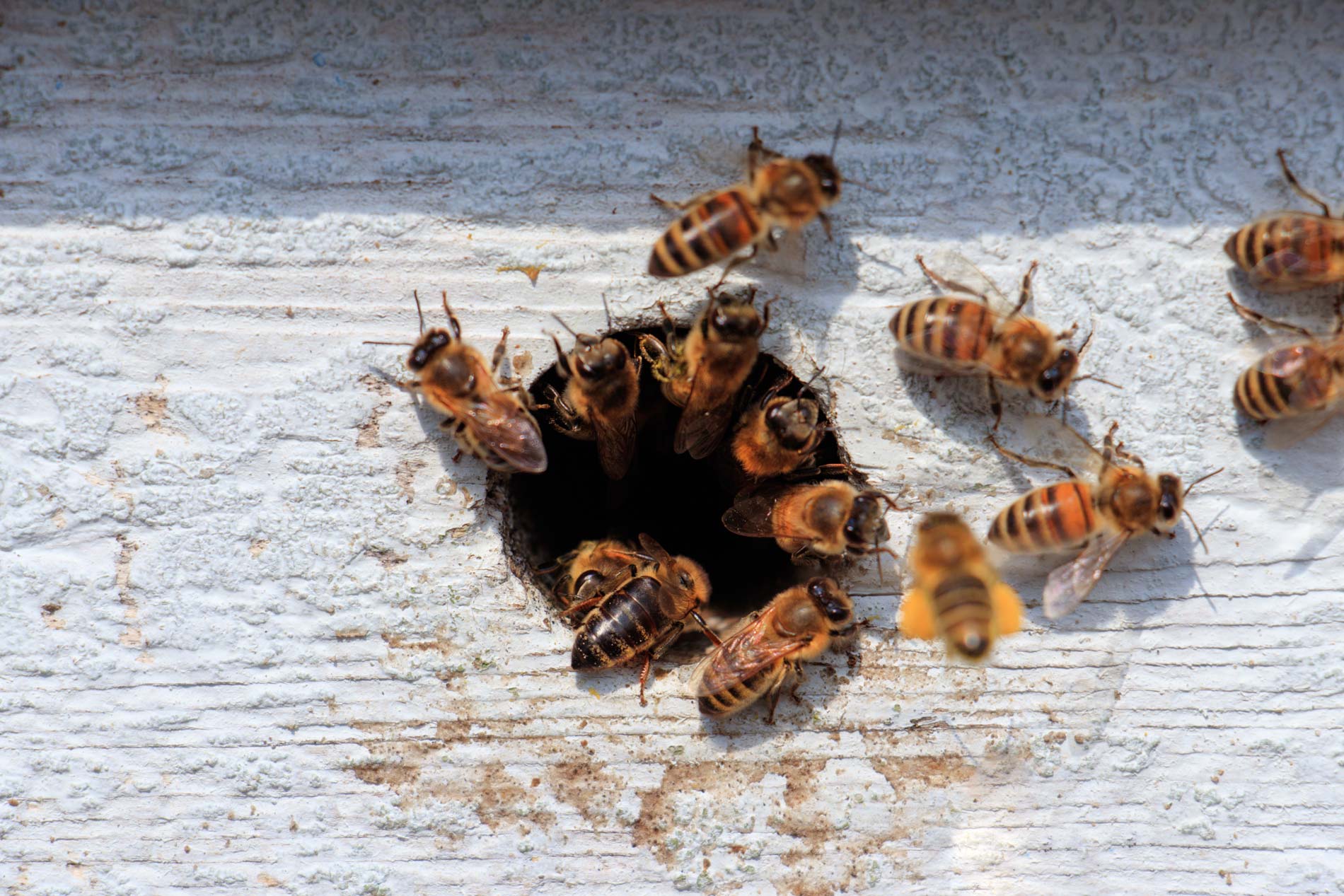
På et filosofisk plan kan der argumenteres for at skadedyr som udgangspunkt ikke findes, da det først er, når et dyr forvolder skade, at det kan betegnes som et skadedyr, men skadedyr er enhver mands plage og der er ingen tvivl om, at der i disse år kommer flere og flere skadedyr til i og omkring boligen.
Spredning af sygdomme går selvfølgelig ind under, hvad betegnelsen dækker. Årsagerne til skadedyrenes vandring fra skov og eng til beboelse er mange og vi vil her prøve at komme nærmere ind på skadedyret, når det migrerer til nye omgivelser.
Men lad os bare slå fast: Skadedyr er en pest, der skal holdes nede og effektiv og akut skadedyrsbekæmpelse af dem er derfor en absolut nødvendighed!
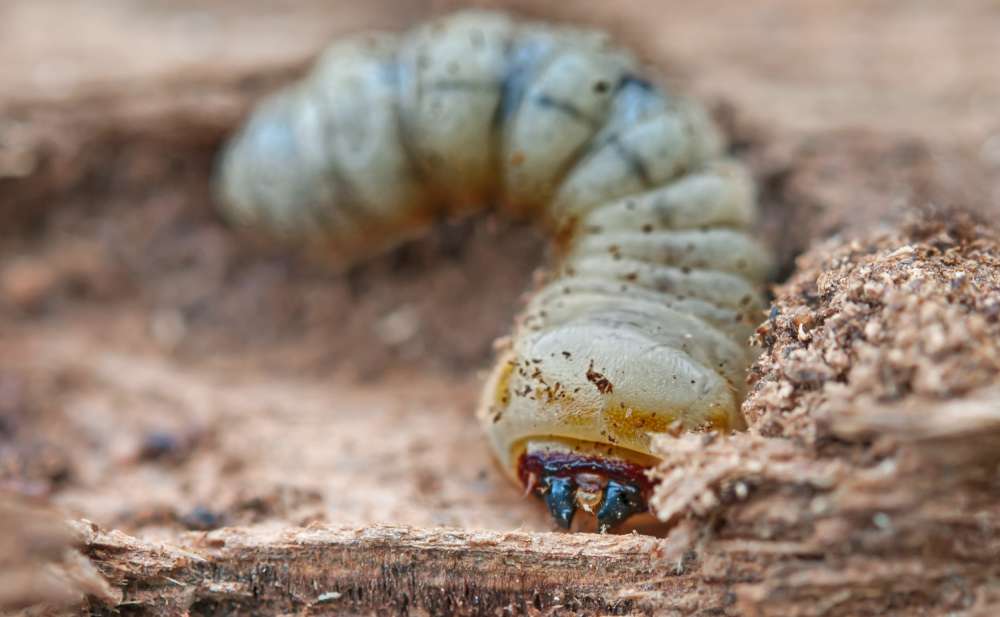
Det er svært at komme af med skadedyr, når de først har fået rigtig fat. Det skyldes bl.a. at der er mange arnesteder, men hvis man tænker sig om, kan man undgå at etablere steder, hvor dyrene kan få lov til at trives og opformere sig.
Et typisk arnested for skadedyr, som mange ikke tænker på, er noget som kan lyde ganske uskyldigt, nemlig ved anskaffelse af et kaninbur. Deri kan mange biller og larver finde føde i form af fæces og madrester, der kommer i klemme i riller og sprækker.
Netop biller og tusindben stortrives i sådan et bur, da forrådnelsen både afgiver varme og dermed lokker mindre insekter til. Skadedyrene lever af insekt-ådsler og andet, der fremkommer i forbindelse med forrådnelse og de formerer sig hurtigt, hvis man ikke holder rent.
Det er vigtigt, at man tænker sig grundigt om ved køb af husdyr. Især hvis man allerede er plaget af skadedyr og det er vigtigt at have in mente, at skadedyr kan følge med i købet, og de kan være svære at komme af med.
Når skadedyrene først har fundet sprækker og revner at lægge deres æg i, så er det for sent, og så har man et stort problem, der vil kræve tilkaldelse af en dygtig skadedyrsbekæmper. Værd at huske er også at små skadedyr ofte fører til større skadedyr. Dette, da små dyr som insekter m.v. giver næring til de større skadedyr.
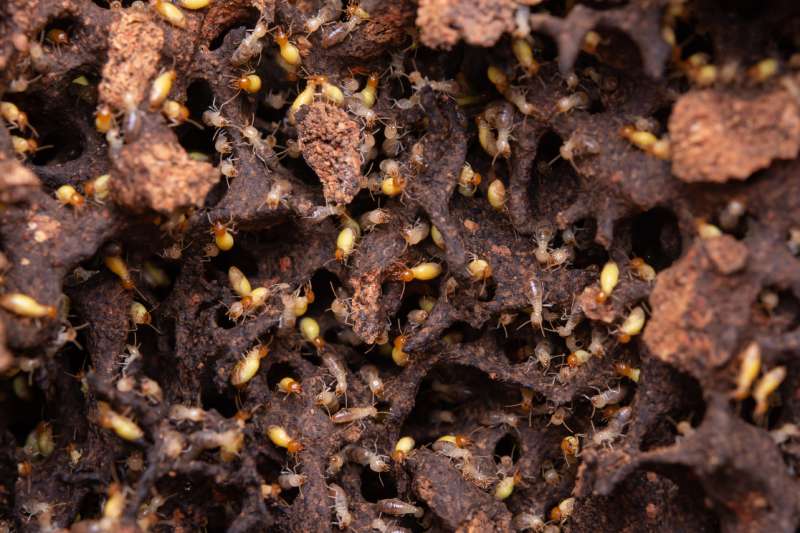
Når skadedyrene begynder at mærke sommervarmen holde fat i jorden, så øjner de nye muligheder. Ikke fordi at varmen giver skadedyr ekstra blod på tanden. Nej, nærmere fordi vi i højere grad har tilbøjelighed til at have døre og vinduer åbne. For skadedyrene betyder det, at der nu er muligheder for at kommer op på loftet eller ind i hulmuren, hvis en dør står åben til et bryggers eller i køkkenet. Skadedyrene skal nok komme forbi, når et vindue netop står på klem.
Et andet eksempel er, at føringen af elinstallationer i et hus ender ude i teknikrummet. Mange skadedyr kan relativt nemt komme ind i hulmuren, hvis der blot er en lille revne i murværket omkring tavle og ledningskanalerne.
Vi ser hyppigt, at sommerhalvåret byder på flere ubudne gæster, der kommer ind i huse, i lejligheder, kældre og i tagrum via åbentstående vinduer og døre, da skadedyrene finder disse smutveje. Ikke fordi de er kloge og/eller skarpsindige, men fordi der simpelthen er så mange. Alene deres antal gør, at der sandsynlighedsmæssigt, kommer et skadedyr forbi dit åbne vindue og derved trænger ind i hjemmet.
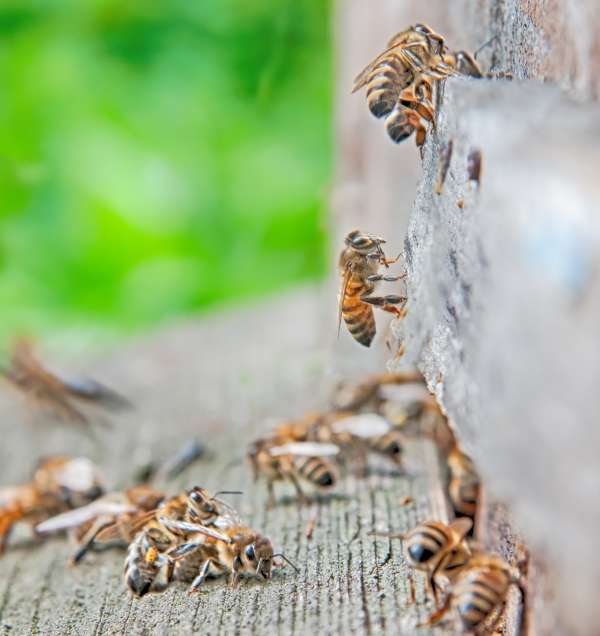
Der er mange, der spørger om skadedyr spiser andre skadedyr? Svaret er JA!
Der er slet ingen tvivl om, at mange skadedyr ernærer sig direkte af andre skadedyr. Eksempelvis kan en fødekilde for skadedyr som mus og rotter nemt være skadedyr som klannere, larver, tusindben og andre insekter. Samtidig er en del af skadedyrene også ofte ådselsædere. Disse skadedyr bør betragtes som vigtige i et økologisk kredsløb, men i husholdningen er maddiker, mellus m.fl. absolut ikke velkomne.
Er der mange små skadedyr, så kan man også være så godt som sikker på, at det fører til indvandring af større skadedyr. Det ses ofte, at dyr som biller og larver medfører, at mus og rotter finder føde.
Er fødekilden til de små skadedyr som insekter permanent, vil de større dyr også finde mere permanente opholdssteder i samme omgivelser. Og får mus og rotter først fodfæste, så vil det blive svært at slippe af med de mindre skadedyr – insekter som larver.
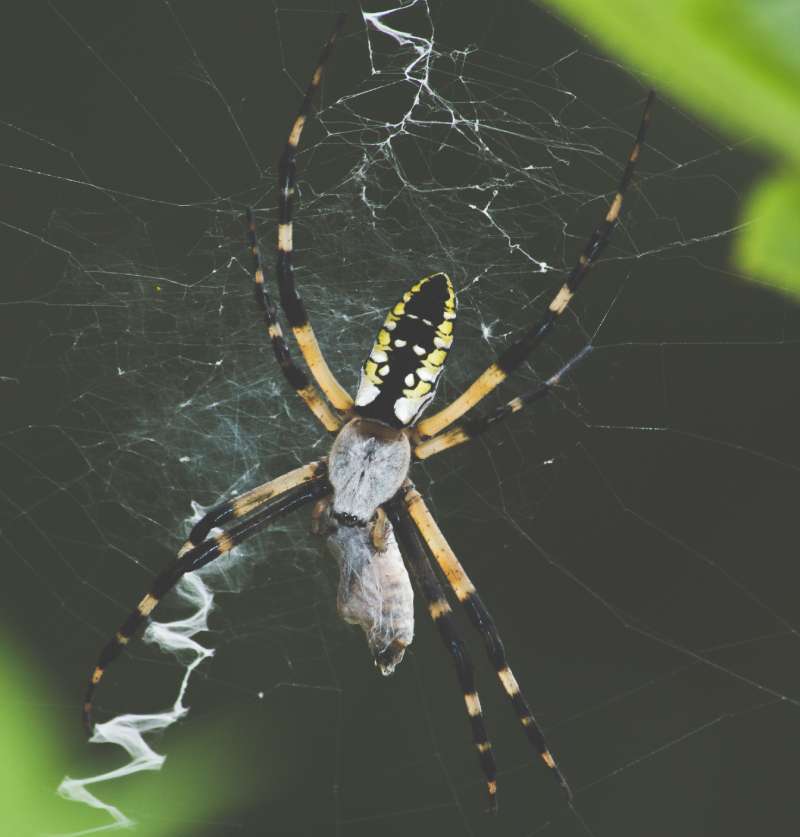
Vi sidder klar alle ugens dage og vores skadedyrsteknikere rykker hurtigt og diskret ud til bekæmpelse af alle slags skadedyr.
Professionel hjælp lige ved dit dørtrin

Elis Danmark A/S har overtaget
Absolut Skadedyrsservice A/S.